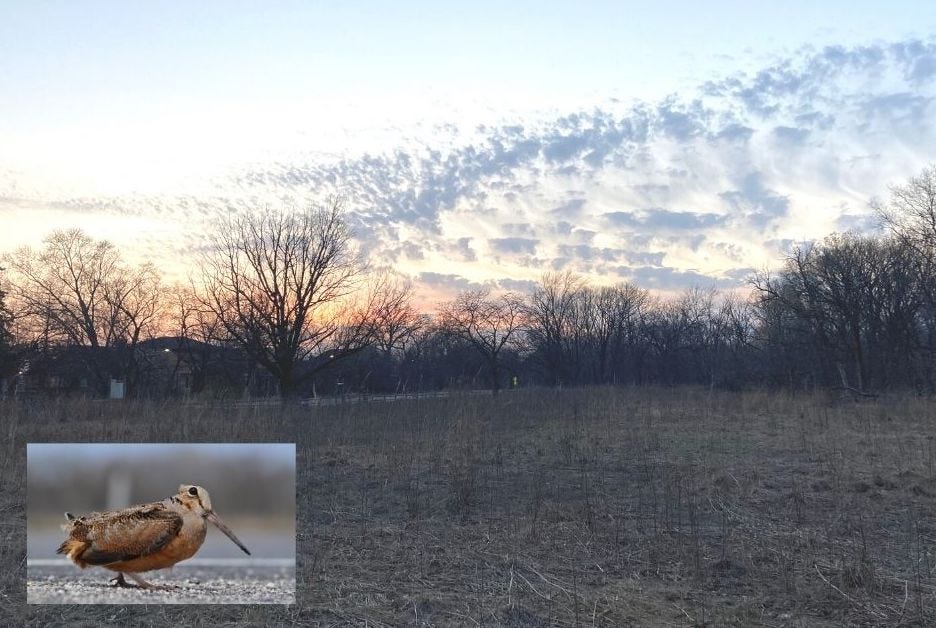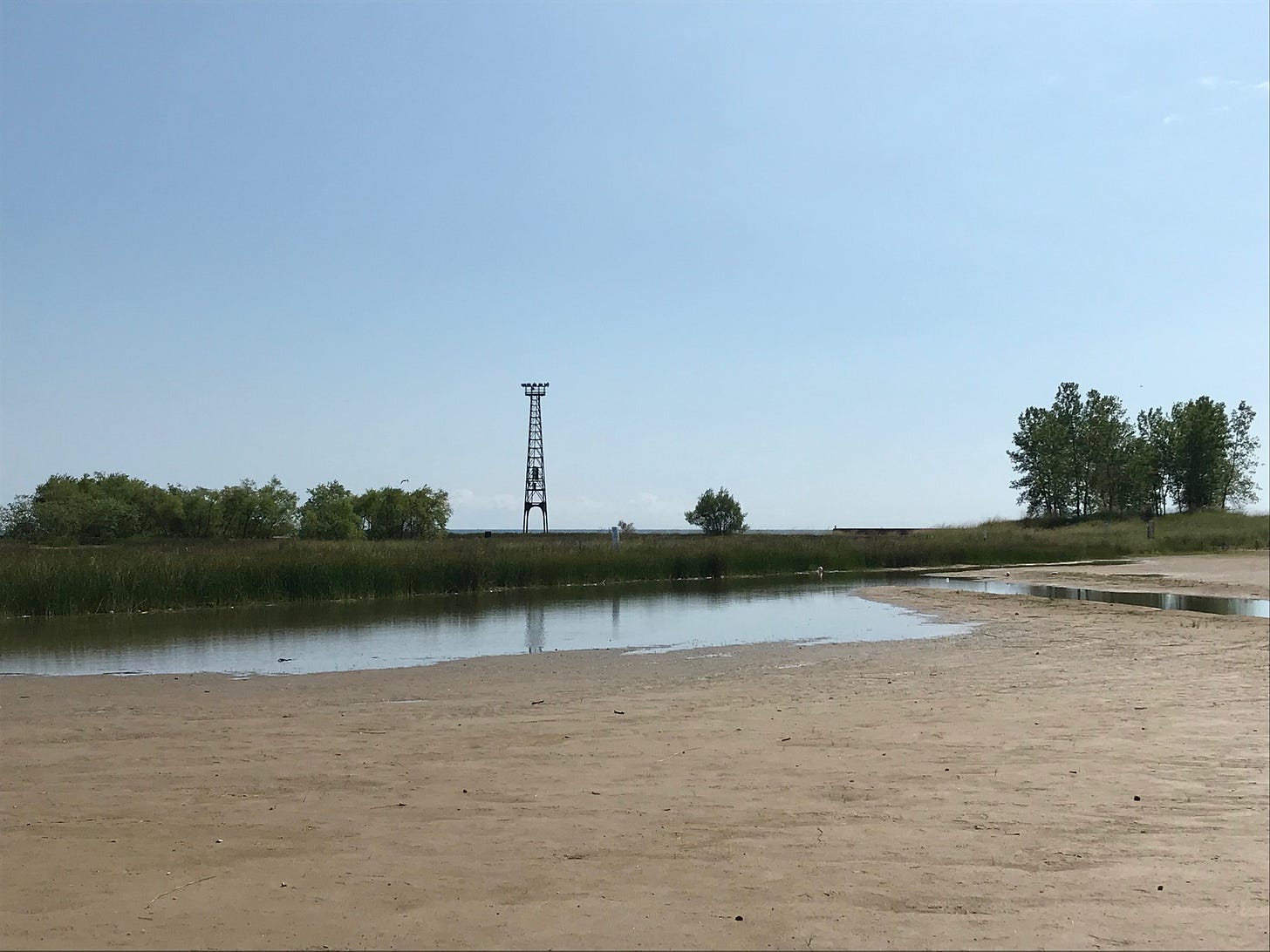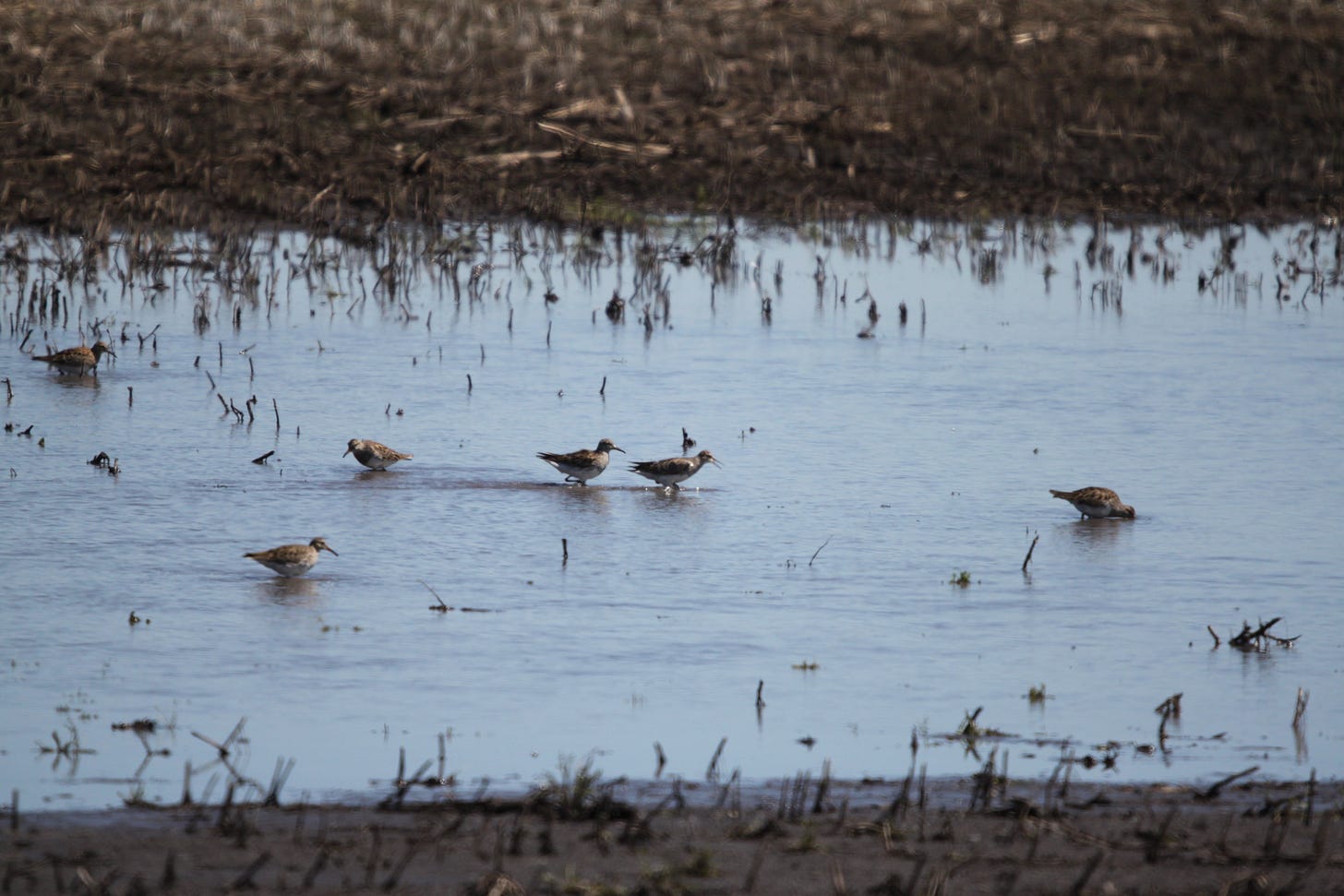A month searching for Chicago's timberdoodles, and here's what I found
Return of short-distance migrant to woodlands and wet meadows is a rite of spring.
It doesn’t take much to get American Woodcocks, aka Timberdoodles, to migrate north. On the first somewhat mild day in March, they’re back in these climes, probing for worms in our woodlands and wet meadows (something I wrote about for Indiana Audubon’s March Migration Madness two weeks ago).
Timberdoodles are what brought me to a waterlogged prairie in northern Cook County on March 8. I thought I had the place to myself when I saw another humanoid form in the field ahead. These things happen in birding—you could be in some of the most far-flung places and encounter a familiar face. So of course, this was someone I knew.
“There’s two of them right now if you listen closely,” he said.
Alright great, I thought. First woodcocks of the year, a moment I’d waited for throughout a bleak January and a snowbound February, a dark winter indeed. Sure enough, I could hear a pair peenting back and forth within a few hundred feet but still couldn’t get my eyes on them. One of the things I’d learn in the next few weeks of tracking woodcocks: Arrive right at sunset, not at last light or civil twilight like I did. There’s a much better chance of getting a visual.
I watched and listened for a little longer. It was almost full dark now, and I could make out the Big Dipper in the northeast and Orion to the south. There was a little bit of light in the west, which must have been shining all the way from O’Hare Airport. A Metra line and an expressway were visible off in the distance.
“Peent!” buzzed another woodcock. This time I detect its shadowy form springing into the air and fly up, up and up until it was out of sight. A minute later the timberdoodle is making a descent somewhere off in the darkness, the wind in its wings making chirps and whistles as it fell. Odd critters these are indeed.
***
Thaddeus “Ted” Lechowicz Woods is part of a thin chain of forest preserves in Chicago’s northwest that run along the North Branch of the Chicago River. There’s a small prairie that’s been restored there, uphill from the river. It’s not quite a birding mecca, but it has a nice mix of habitat. It also has the benefit of being at the end of my street.
It’s a couple weeks after the first woodcock encounter. This time I stay closer to home and head over to Lechowicz. It was somewhat of a whim; I felt my odds of actually encountering one were very slim. I’d had a clue about the spot in the North Suburbs, but here I was on my own.
I was on a mowed path right at sunset when I watched what looked like a large bat flutter directly over me. It was too barrel-chested and round for a bat, though. There was really only one possibility: Timberdoodle! And then I watched as it landed a few yards ahead of me. I watched for a while through my binoculars, my 42mm objective lenses had never gathered so much detail with so little light. The bird’s intricate feathering was as clear as day.
It started peenting before bursting upward again and disappearing into the sky. About a minute later I saw it make a tumbling descent a little farther south, alighting on the path once more. It repeated this pattern several times, peenting about five seconds apart for a minute and then disappearing dozens of meters above the treetops of the nearby oak savanna.
Here’s audio and video of the first woodcock peenting, it’s the blurry form in the center of the path. Eventually I heard a second woodcock that night, farther north.
When I returned the next evening, both birds appeared to be there again. I got a closer look at the second one, even observing it circling high above the rooftops of our neighborhood before re-appearing in the prairie as a buoyant little blob. This time I stayed well over an hour before making the short walk home.
***
We go through winter longing for moments like these. As much fun as the common winter residents are, cardinals, chickadees, woodpeckers and the like, woodcocks provide something more than just a brief diversion. Sure, these early spring visitors will quickly get eclipsed by the first warblers of the year, and eventually, tanagers, grosbeaks, orioles and more. But I’m going to see if I can keep it up for a while. I’m going to see what’s possible to experience during woodcock breeding season, too. And I look forward to reporting back.
Whether fluddle or floodel, it’s time to celebrate
This was a footnote in the great news last week that the Chicago Park District would expand the Montrose Beach Dunes Natural Area by 3.1 acres. From the Park District’s press release:
“The dune, panne and ‘floodel’ clean water, hold carbon in the fight against global warming and also provide protection of other infrastructure and preventing the loss of sand on the beach by holding water during storm events and high wave action.”
I did a double-take when I saw ‘floodel’ before realizing that this was actually a reference to ‘fluddle,’ a term birders use to describe standing water that is something bigger than a puddle. There’s a famous fluddle at Montrose where endangered Piping Plovers Monty and Rose have foraged the past two years. That’s included in the habitat addition. People use ‘fluddle’ so much that ‘floodel,’ which presumably would rhyme with noodle, really stood out.
This also caught the attention of folks on the Illinois Birders Exchanging Thoughts message board. Wrote Eric Secker of West Dundee in Kane County:
Jim Frazier used the term since at least 1995 here in Illinois during his time running the DuPage Rare Bird Alert hotline.
It's a word that is still fairly limited to Illinois.
It's generally used to describe a flooded area, often in reference to a flooded farm field. It's too big to be a puddle, but not a pond or lake, and generally more shallow. They are generally temporary, but some exist year-round. If it's permanent and a lot of vegetation starts to grow up, it might cross over into being called a marsh or wetland. The term tends to be used in areas where their presence is unintended, unwanted, or indirectly results from other activities or management. In natural areas like woodlands, they are more likely to be naturally occurring vernal ponds/pools or wetlands.
Wow, so fluddles and floodels might just be an Illinois thing. Which makes sense, we do have a lot of standing water, ephemeral wetlands and vernal pools. But that the Montrose fluddle would make it into a press release…it’s kind of neat.
TWiB Notes

One of the more interesting sagas in area birding will continue for another year. Esteemed Field Museum ornithologist Doug Stotz again has a Yellow-throated Warbler around his yard in the West Suburbs…..Tamima Itani, who’s become known as “plover mother” as the chief volunteer organizer and monitor for Monty and Rose, took it to another level by traveling to Texas last week to spend some time with Monty on the Gulf Coast. Read the incredible story here…..Frontier Airlines has named one of its planes ‘Francie’ after Dr. Francesca Cuthbert, of the University of Minnesota, who leads the Great Lakes Piping Plover Research Team and has been instrumental in the recovery of the species. The plane includes a Piping Plover image on its tail as part of the airline’s Endangered Animals Initiative…..The Forest Preserves of Cook County has a nice guide to spring ephemeral wildflowers and where to find them in the preserves here.
This Week in Birding provides original posts direct to your inbox each Monday and on Fridays (for paid subscribers). Click below to become a paid subscriber today, and join a community where telling stories of birds and making films like “Monty and Rose” and “Dodger” is possible.





